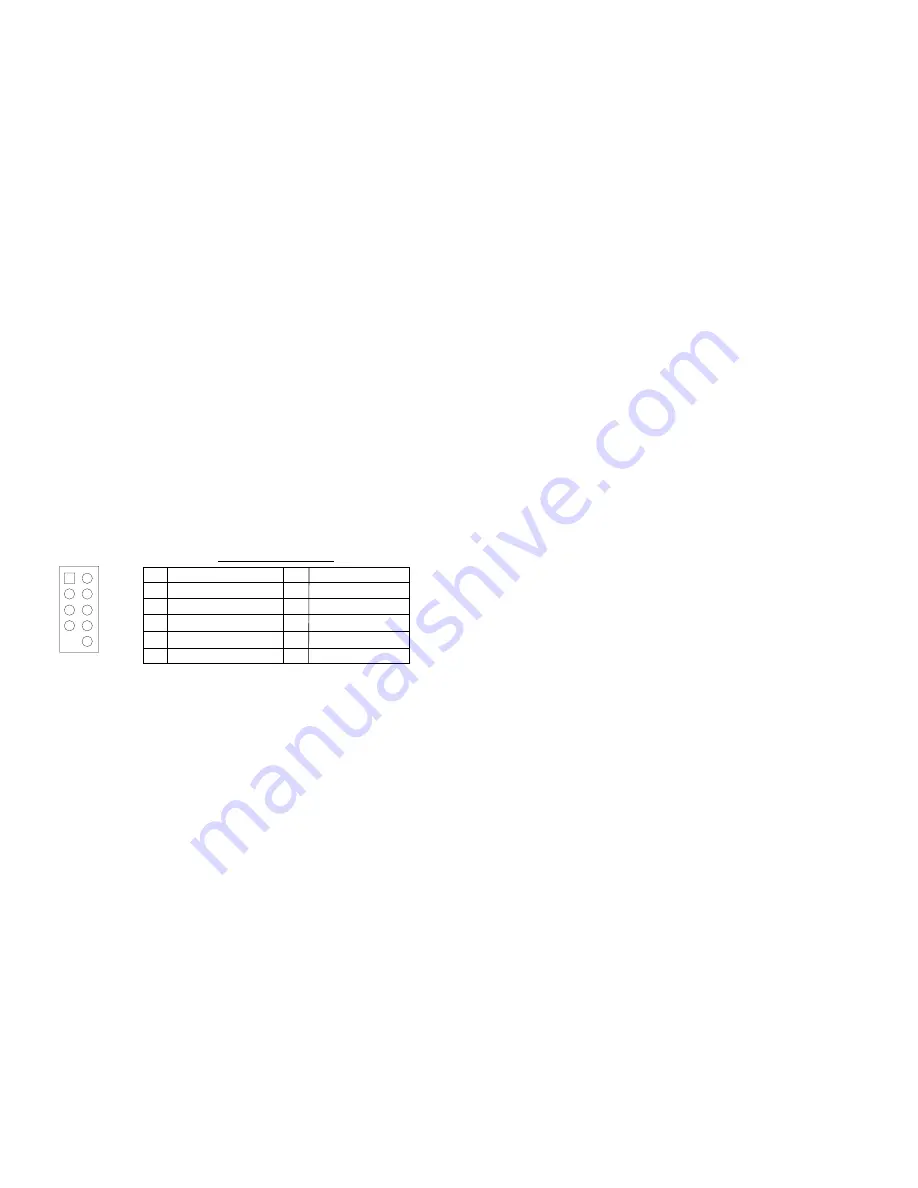
etc. or any other function supported by your motherboard, expansion cards, and
peripherals.
Connecting the USB ports
You'll find two 5-pin internal USB connectors (on separate cable sets) attached
to the front USB connectors. Here's how to connect the internal USB connector
to your motherboard headers:
1. Check the USB pin layout in your motherboard user manual and make sure
it follows this standard pin out:
Pin 1: USB Power - may also be l5V
Pin 2: Negative Signal - may also be labeled P-, D-, USB0-, etc.
Pin 3: Positive Signal - may also be labeled P+, D+, USB0+, etc.
Pin 4: Ground
Pin 5: Ground (sometimes this pin is missing)
Note:
Your motherboard's USB pin layout may differ from this common
standard. If you're unsure of your motherboard's layout, please contact
technical support at your motherboard's manufacturer.
2. Connect the 5-pin USB connector so that the red wire is on Pin 1 (Power,
or +5V). The second header may be reversed (Power pin at the opposite
end of the row) so be careful when you plug in both connectors.
Installing 3.5" Devices
There is one 3.5" drive cage inside the case. The upper portion can hold 2
external 3.5" drives, and the lower portion can hold 3 internal 3.5" drives.
1. Mount your external 3.5" drives into the top two drive bays. Load the
drives from the back, lining them up to the front of the drive cage.
2. Use one hand to support the drive, and fasten the drive to the cage with
the screws provided.
3. Mount your hard drive or other internal 3.5" device into the drive cage by
threading the special screws through the rubber grommets. Don't over-
tighten the screws, since that could decrease the grommets' ability to
reduce vibration and noise.
6. Find a small 4-pin connector on the power supply and connect it to the
male 4-pin connector on the floppy drive.
7. Connect a 4-pin large connector from the power supply to the male 4-pin
connector on each of the other devices.
3
4
1
2
9 10
Pin Signal names
Pin Signal names
1
USB Power 1
2
USB Power 2
3
Negative Signal 1
4
Negative Signal 2
5
Positive Signal 1
6
Positive Signal 2
7
Ground 1
8
Ground 2
9
Key (No Connection) 10
Empty Pin
Motherboard Pin Layout
Installing 5.25" Devices
1. If you look at the 5.25" drive bays from the rear of the case, you'll see
some metal grilles covering those bays. Carefully push a screwdriver
through the metal grille, and gently remove the plastic drive bay cover by
pushing outwards.
2. Use your hands to twist the metal plate back and forth until it breaks off.
Note:
Don't break off the metal grilles covering the drive bays that you
don't intend to use now. Be careful of the newly exposed metal where the
grille was attached, as these areas are likely to be sharp.
3. Using the screws provided, fasten your 5.25" device into the drive bay.
4. Repeat the same procedure for other devices.
5. Connect a 4-pin large connector from the power supply to the male 4-pin
connector on each of the devices.
Connecting the Data Cables
After you've connected the devices to the power supply, you need to connect
data cables between the devices and the motherboard. To achieve the best
data-transfer and cooling performance, we recommend using premium rounded
cables such as Antec Cobra Cables.
The cables that are included with your drives should have a red strip on one
side indicating pin number 1. If you use these cables, make sure that the red
strip is on pin 1, usually toward the power connector.
Installing the Fan
We've included one low-speed 120mm exhaust fan with this case. This (rear)
fan is mounted with a vibration-absorbing NoiseKiller™ kit, which will allow your
computer to run extremely quietly. In the front of the case, you'll also find a
mount for an optional 80mm intake fan.
The rear fan is installed so that the air blows out of the case. Find a large 4-pin
peripheral connector on the power supply and connect it to the male 4-pin
connector on the fan.
The front fan (optional) should be installed so that the air is blowing into the
case from the front. To install it:
1. Release the fan cage by squeezing the tabs.
2. Put the fan in the cage and push it into place until it snaps tight.
3. Snap the fan cage back into place.
4. Connect a large 4-pin peripheral connector from the power supply to the
male 4-pin connector on the front fan.
Chassis Air Guide
Your new case includes a chassis air guide, which provides cooling air directly
to the CPU. The air guide consists of three parts: an upper duct, flange, and
lower duct. If you prefer, you can adjust the distance between the lower duct
and your CPU, for maximum cooling efficiency.
Содержание SLK1650-QE
Страница 1: ...User s Manual SLK1650 QE...
Страница 6: ......

























